TL:DR – Advice on how to improve your chances of attracting birds to your garden.
Sciencebase reader Michelle messaged to ask how she might attract more birds to her garden. There are plenty of things she can try to see more of our feathered friends on her patch. Some things will have an almost immediate effect others might take a little longer. The rewards are always worth the effort to see the variety and numbers of birds that can appear. I have an article about the birds you might see in an English country garden. Here’s my garden tick list.
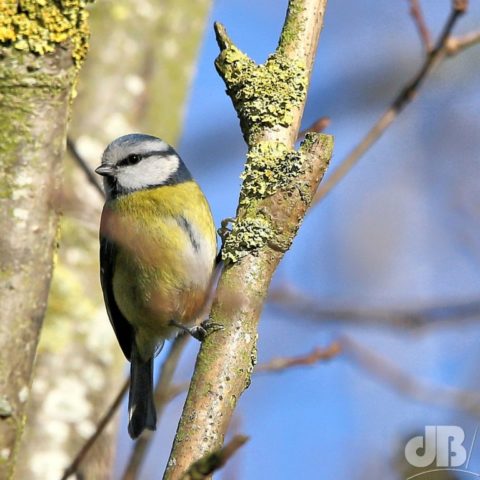
What to do
The most obvious thing to do is to ask what the birds need and then try to fulfill those needs: water, food, shelter/cover, somewhere to nest.
So, you could put out a couple of shallow, but wide, bowls and fill them with water. One could be at ground level another on a stand. Of course, there are plenty of birdbaths of different kinds to be bought at garden centres or online. A more ambitious approach might be to dig a wildlife pond, stock it with a few native pond plants and let it thrive (avoid using a pump, don’t add fish). Birds need water to drink and to bathe and it’s always a treat to see them doing so. It’s a good idea to clean birdbaths and bowls and to refresh the water often. Birds are not particularly hygienic and will often leave poop in the water, which can spread disease to other birds.
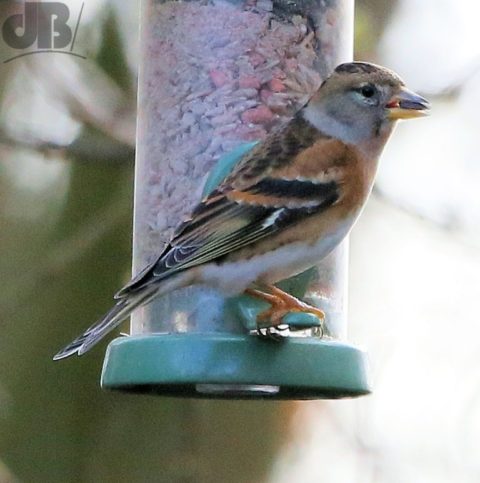
Bird food is the next easy way to attract birds. There is a massive variety of feeders and food available for garden birds. I’ve found that it can take a week or more for birds to find a new feeder, but other people tell me birds are drawn immediately as soon as they hang one out even if they have never done so before.
Feeders designed for particular foods are usually needed. Suet and seed balls (great for Blackbirds, Blue Tits, Great Tits, Cole Tits, Robins, Starlings, overwintering Blackcaps). Nyjer seeds and a feeder that mimics a plant seed head will be a draw for Goldfinch and perhaps even Redpoll.
Black sunflower seeds (husk still on) need a strong bill and will tend to be eaten by Greenfinch and Goldfinch but sunflower hearts (dehusked) can be eaten by a wide range of additional species. Peanuts also need a special feeder that forces Blue Tits and others to break off tiny pieces of nut rather than grabbing a whole nut that might choke them or a chick. It’s important to use good quality peanuts sold for birds to avoid feeding them peanuts with toxic and cancer-causing black moulds.
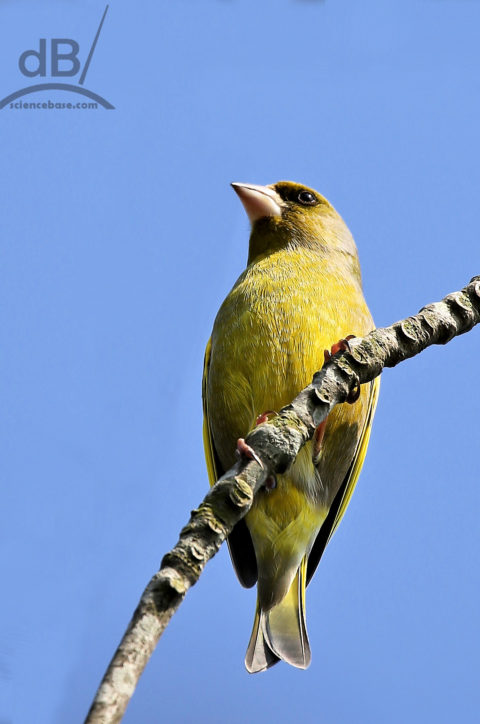
Dried mealworms are tasty and attract different species. You can put them in a hanging feeder or on a ground feeder (use a refuge if there are cats that visit your garden or you have a dog). Products such as “Flutter Butter” come with special wall- or post-mounted dispensers and encourage birds to stay at the feeding station as they cannot easily grab a morsel and fly off to a tree to eat it.
Longer-term plans might involve that pond or if you haven’t already got native bushes and trees in your garden think about planting some. I’d be keen to plant bushes that produce lots of berries to provide a winter food supply for Blackbirds, Mistle Thrushes and visiting Fieldfares and Redwings. Also, let any ivy go to flower (attracts lots of insects) and produce berries (again, feeds those birds in the winter). The bushes and trees in your garden provide shelter and potential nest sites for a wide variety of species as well as hosting insects.
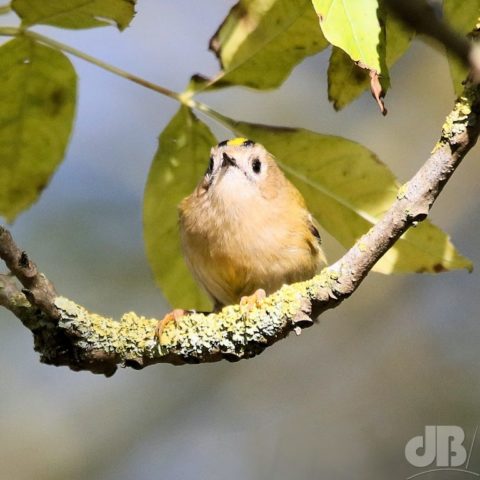
Adding a couple of strategically placed bird boxes also gives the birds another reason to visit your garden. They need to be placed fairly high up on a post or tree in a relatively small garden and generally have a line of sight from a post or tree opposite and several metres away if possible. If you have large windows, consider adding some decals, perhaps bird-shaped stickers, to the windows to help flying birds see that there is an obstacle and so avoid collisions with the glass. I wrote about Wood Pigeons leaving behind a powder down imprint on our windows back in 2017. Look into installing swift boxes or swift bricks too and perhaps adding a squealer to attract the birds arriving in the spring.
What NOT to do
A couple of things not to do. Don’t hang or install shiny, moving ornaments that glint and shimmer in the sun, these might shock easily startled birds and discourage them from enjoying your garden.
Also, don’t trim and prune too hard, in fact, don’t tidy your garden too well. If you leave the bushes and trees to grow a little wild and allow wildflowers (weeds!) to show through, you will encourage insects and that means an additional food source for the birds in terms of the adults and their larvae and caterpillars.
I’d also avoid pesticides and herbicides, these are generally easily avoidable in a small garden. Also, don’t put down ant powder or ant traps in the garden, ants are the staple food of Green Woodpeckers (yaffles). If there are no ants in your garden, you’re unlikely to see that bird visit.
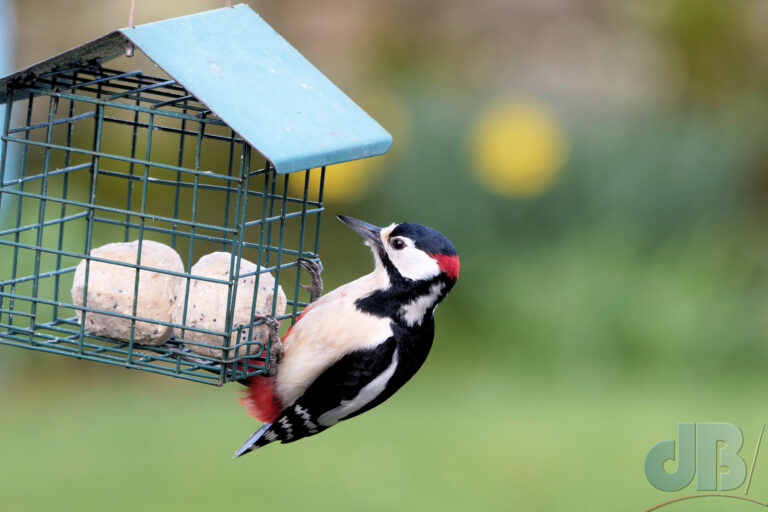
I don’t recommend scattering bread or other cooked products for birds in your garden and no bacon rind. These are generally too high in sugar and salt for birds to cope and can also attract rats.
If you notice birds looking ill or with lumps on their heads or bodies, it’s a good idea to remove all feeders, discard uneaten contents, wash thoroughly in soapy hot water and leave them to dry. Don’t put the feeders out again for a couple of weeks so that the diseased birds might disperse.
Don’t use Astroturf and don’t pave over or gravel too much of your patch.
More on ponds
Your garden wildlife pond can be as ambitious as you like, but you can also create a great micro ecosystem using a half barrel or a Belfast sink. You might need to line them, you can sink them into the ground or leave them free standing. Let them fill with rainwater and then get some native pond plants (it’s best not to acquire materials from other garden ponds to avoid sharing disease).
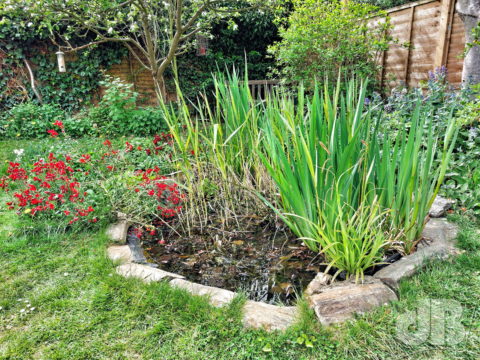
Put some pots or stones within strategically placed to allow any frogs that turn up to easily get in and out and to avoid trapping hedgehogs that wander in. Terracing and shelving is essential for a full-size pond in this regard too.
An additional thought about ponds is to create a spillover area behind your point that will provide a permanently muddy patch, this will provide habitat for plants and organisms that favour something in between dry land and deep water. Again, increased natural diversity for the sake of the wildlife and for your own interest is the aim.